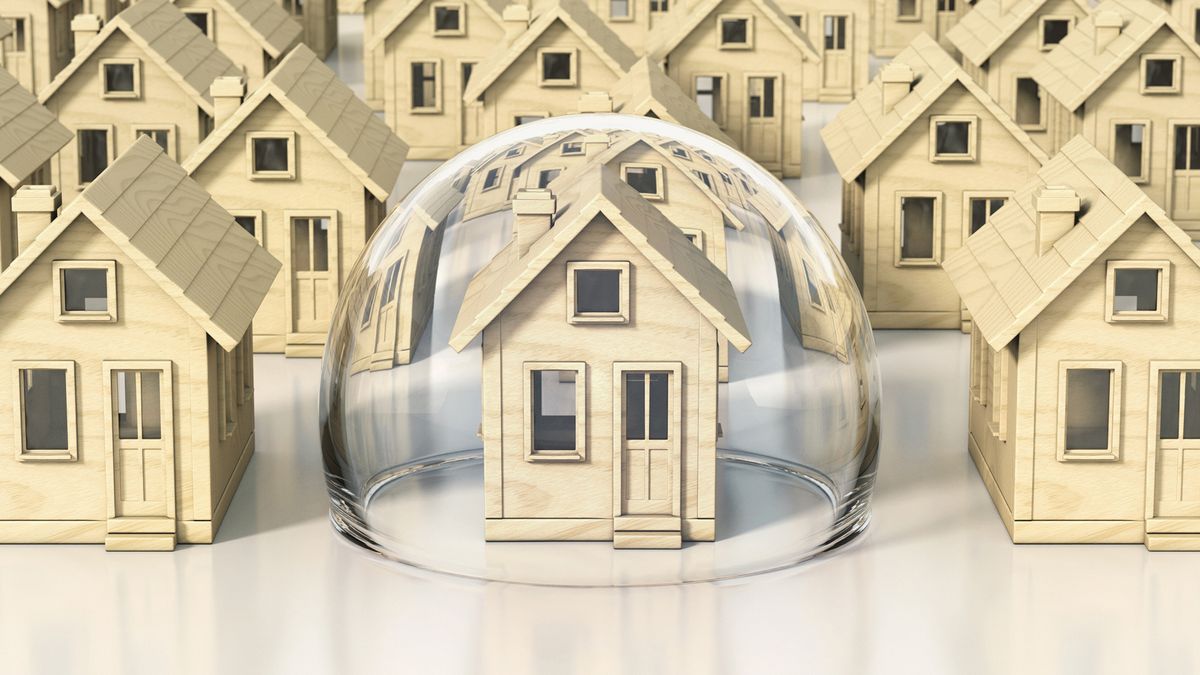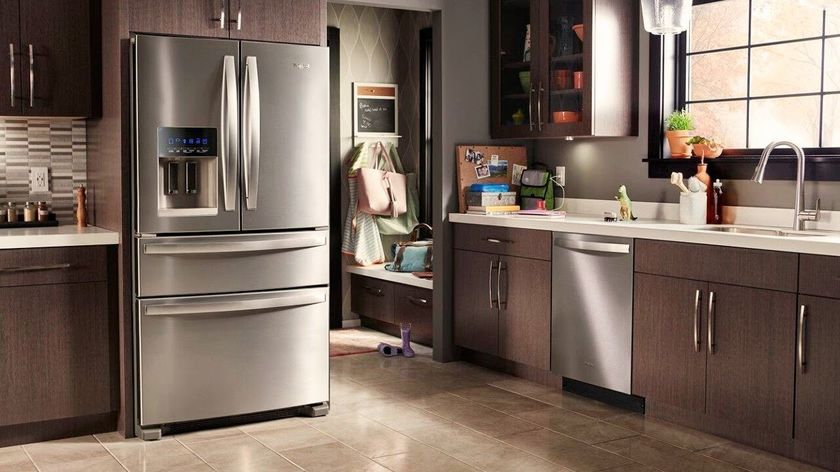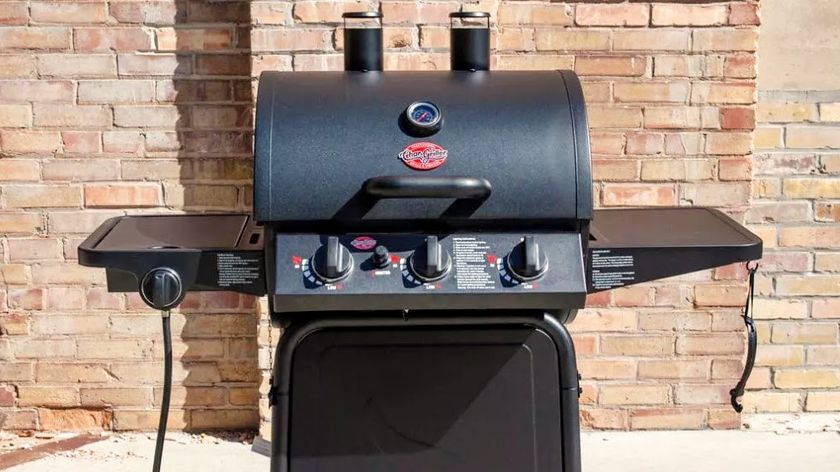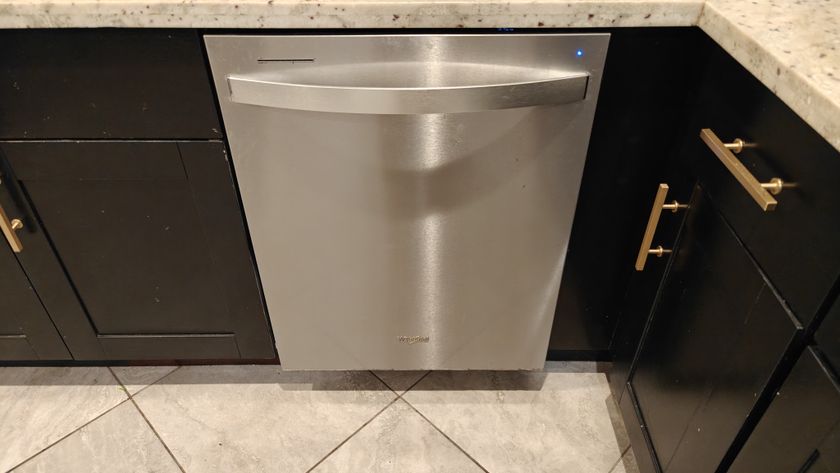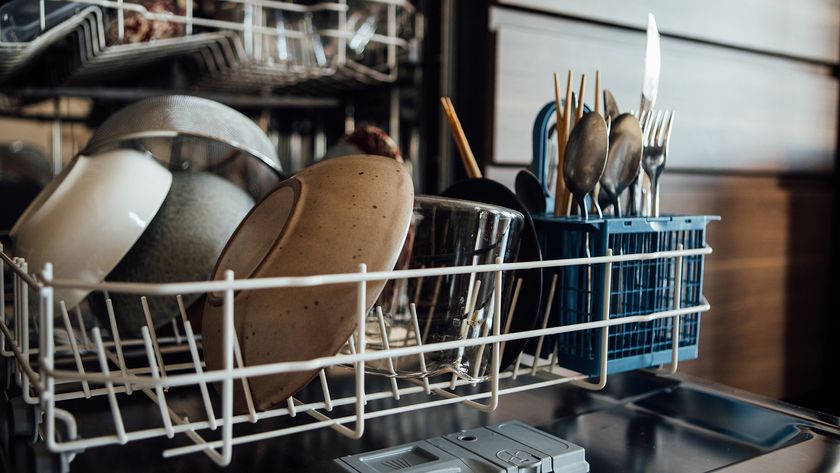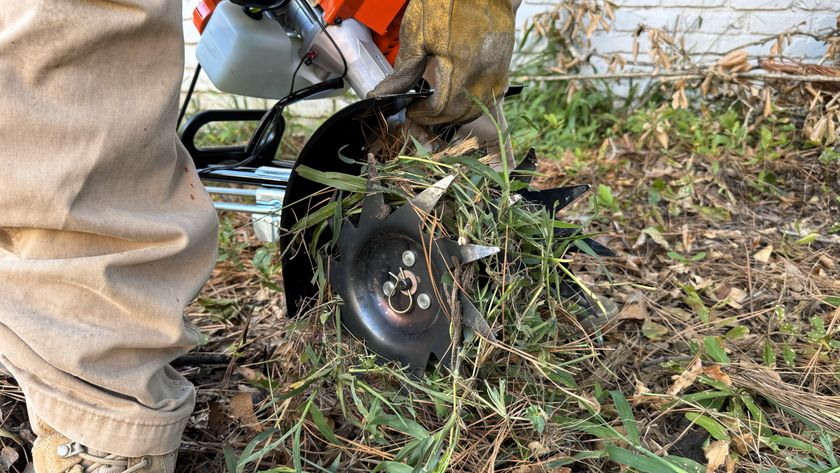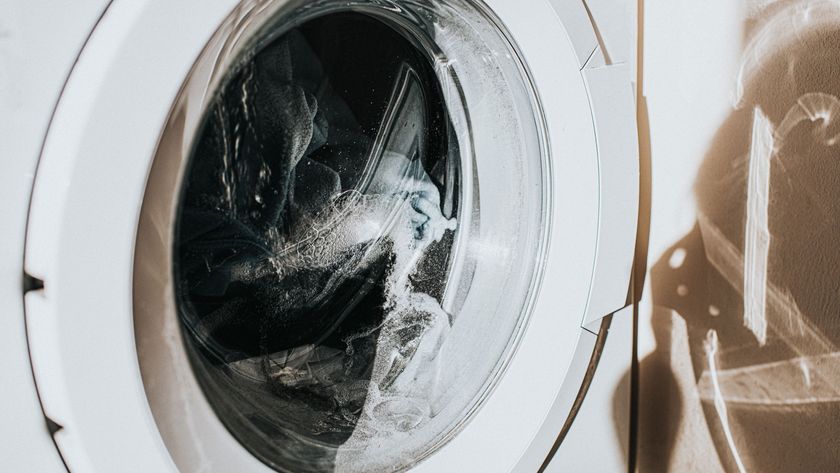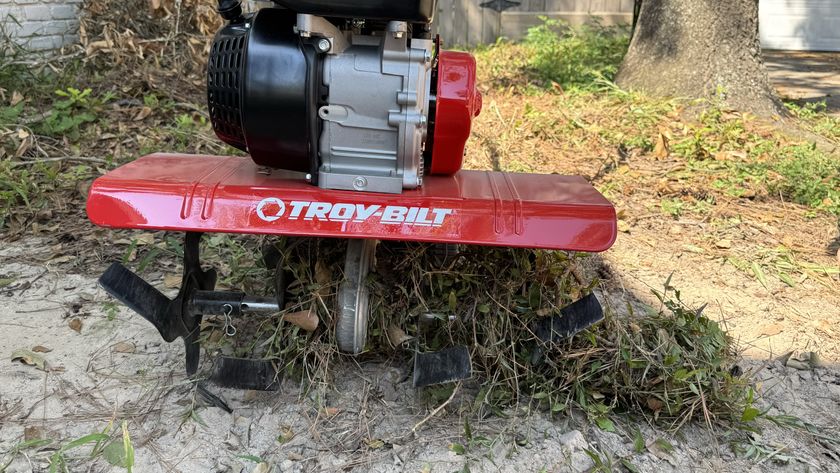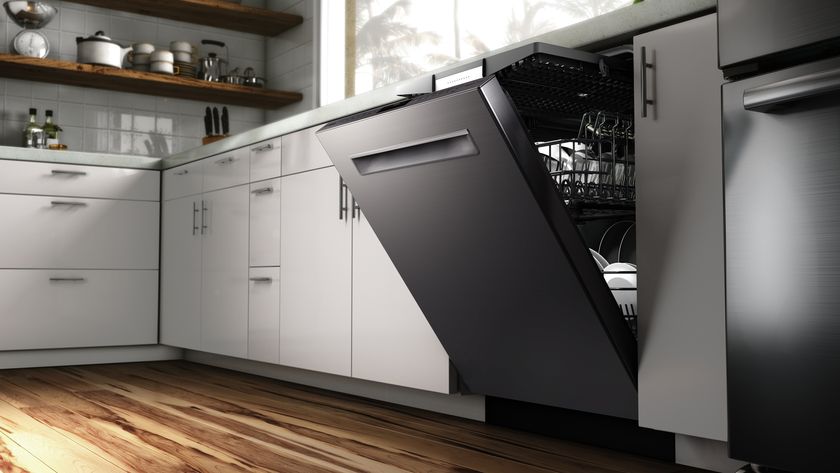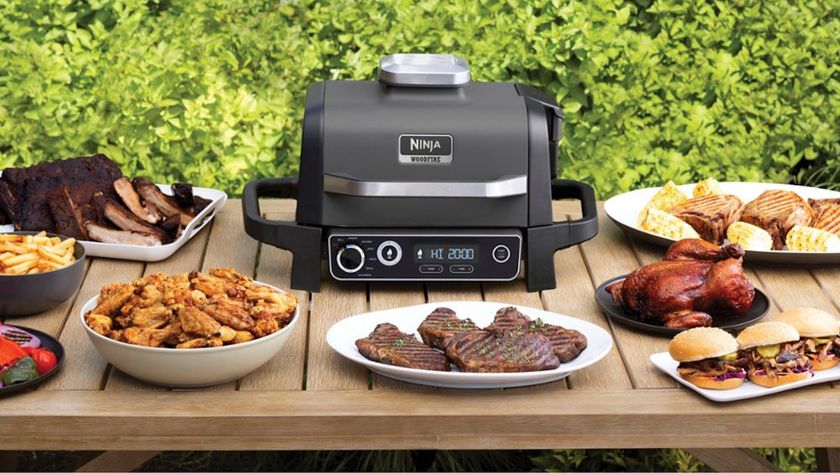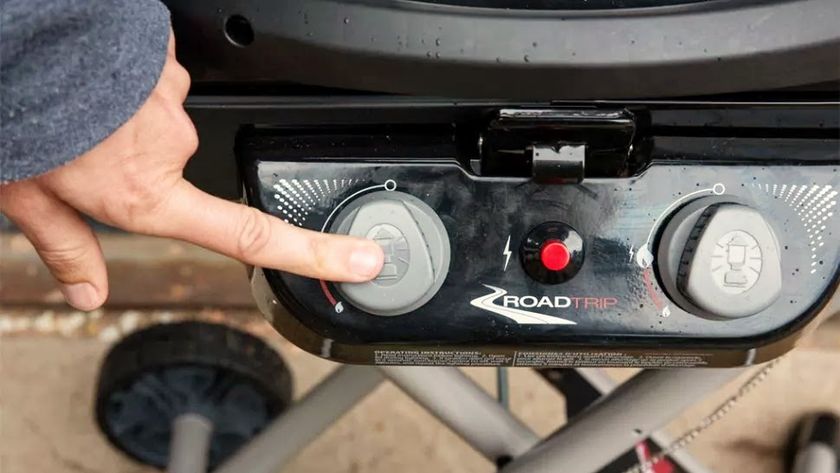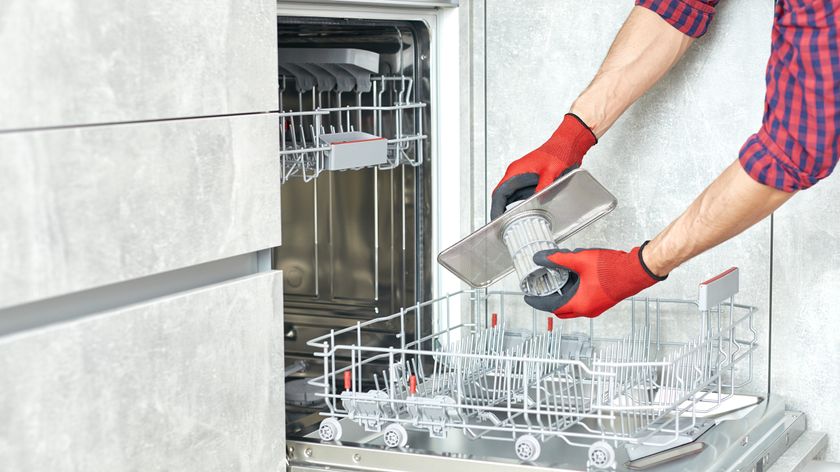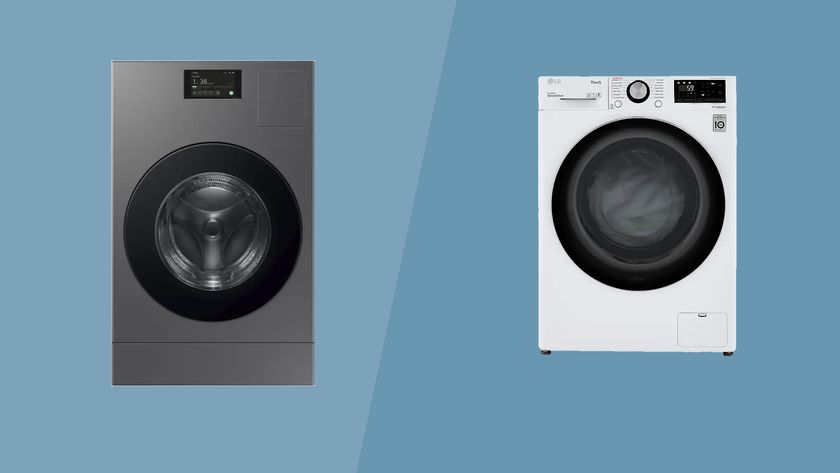If you’ve worked hard to save money for a house, have spent time sourcing the best mortgage lenders and have got the truck rental service booked for the big move, you’re probably itching to get the keys to your very first home. But there’s one more thing you need to think about before you get too comfortable – homeowners insurance. Yes, we realize that it isn’t the most exciting of purchases and no, you probably don’t want to think about spending yet more money, but given the expense of your new home, doesn’t it make sense to protect your investment? Here, we uncover everything you need to know about homeowners insurance, giving you the peace of mind you need to truly relax in your new surroundings. And when you're ready to buy some, we have a guide to the best homeowners insurance available today.
What is home insurance?
Put simply, homeowners insurance – otherwise known as home insurance – is an insurance policy designed to protect you from financial loss should anything happen to your property. “If an incident damages or devastates your home or personal belongings, homeowners insurance will compensate you,” explains Lyle D. Solomon, Attorney at Oak View Law Group. “It will also protect you if you injure someone else or cause asset damage in certain circumstances.”
He goes on to explain that there are three primary purposes to home insurance: to make repairs to your home, yard, and other structures; to repair or replace personal items; and to cover your liability if you are legally liable for someone else’s property damage or harm. Essentially, homeowners insurance is there to provide financial recourse should an unforeseen event cause damage to your property, its contents or a third party, which makes sourcing the right coverage a vital point on any new homeowner’s checklist.
Is homeowners insurance mandatory?
No, but that doesn’t mean you shouldn’t have a policy. Solomon explains: “Homeowner’s insurance is not legally required, but if you have a mortgage, your lender will require you to insure the property to safeguard its investment. Even if you don’t have a home loan, home insurance is always a good investment because it provides asset and liability coverage.”
Essentially, if you have a mortgage, you may not be able to avoid taking out home insurance, as having a policy will likely be a key part of your mortgage agreement. You may even be required to show proof of suitable coverage before your home loan is approved – you’ll usually need to have cover that equates to the full value of the property, thereby proving to the lender that in the event of fire or a similar disaster, they’d get their money back. You’d be expected to keep this insurance policy until the loan is repaid, though really, it makes sense to keep it even if you own your home outright – if you couldn’t afford to completely rebuild your home in the event of an insured disaster, seeking suitable coverage is a must.
It’s recommended to choose the homeowners insurance policy yourself, because as Solomon points out, “your lender may purchase insurance on your behalf and charge you for the amount. However, the insurance policy obtained by the lender might be more costly and may provide less coverage than what you may get on your own.” For this reason it’s always best to do your own research and see what’s out there, but it’s important to know the types of policy available and the level of cover that you’ll need.

What does homeowners insurance cover?
"Because there are so many perils that threaten a home, it is important for homeowners to understand which perils are covered under their policy and which may be excluded,” says Mark Kulda, Vice President of Public Affairs at the Insurance Federation of Minnesota. Luckily, he points out that "nearly all homeowners insurance policies cover damage from storms, fire, burglaries and other accidental causes,” but there’s a lot more to it than that.
"While a regular homeowner’s policy might help protect your home, it usually covers more than just the physical structure,” adds Solomon. "A typical policy may cover everything from your personal items to the shed in your backyard, as well as medical fees if a guest gets hurt on your property.”
There are a few standard elements of homeowners insurance that most, if not all, policies will include. These are:
- Damage to the property itself, both the interior and exterior, often known as dwelling coverage. If your home is damaged by a covered peril, you’ll be compensated for the repair or even complete rebuild of your property. Related structures (such as a decking area) may also be included.
- Other structures. Any freestanding structures (such as a shed or garage) will often be included, though in some cases they may need separate cover or additional riders.
- Personal property. The loss or damage of any personal assets – including appliances, jewelry, clothing and furniture – will normally be included in the policy, up to a certain limit. You can often benefit from ‘off-premises’ coverage as well, which means you can make a claim if you lose personal possessions away from your home. However, it’s important to note the coverage limit, and if you own a lot of high-value items, you may need to pay extra to have them included in the policy, or could be required to insure them separately.
- Personal liability cover (including medical expenses). Liability cover is there to provide financial recourse should you or a family member damage someone else’s property or injure them in any way, and they sue you for damages. This can be extended to include medical expenses cover for any guests , which will cover the medical bills of anyone injured while on your property.
- Additional living expenses, for example if you need to stay in a hotel or rental while your home is being repaired. This can even include reimbursements for restaurant meals, though there will typically be limits (both daily and total) for the amount you can claim.
Yet while certain features tend to be included as standard, it’s important to point out that insurance policies are designed to be customizable, so if standard coverage isn’t enough, you’ll normally be able to include optional extras – for a price (see the section on endorsements, below).
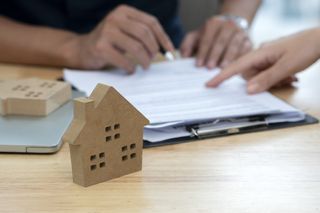
What types of homeowners insurance are there?
All homeowners insurance policies will typically include some variation of the above inclusions, but there are several different types of insurance available, along with distinct levels of coverage.
The three basic levels of coverage are actual cash value (where depreciation is taken into account when calculating the value of your home and belongings), replacement cost (where you’re covered for the original value of your home and possessions), and guaranteed/extended replacement cost (where the policy will pay the full cost of repair or rebuild, even if it’s more than your policy limit).
The third type of cover is the most comprehensive, offering a buffer against inflation and ensuring you’ll never have to pay for the cost of repairs, rebuild or replacement yourself (though there’ll still be a ceiling, but this can be as much as 25% above your agreed-upon policy limit). Actual cash value offers the least comprehensive protection, and means you’ll only be reimbursed according to how much your items are currently worth, rather than what you paid for them, which means you may need to spend more to replace them.
Then there are the specific types of policy available, known as types HO-1 through to HO-8. "There are distinctive kinds of homeowners insurance, referred to as ‘policy forms’,” says Solomon. "Some types provide more comprehensive coverage than others, so it’s essential to understand the distinction.”
HO-1 policies are the most basic option available, offering cover against losses caused by 10 named risks (fire or lightning; windstorm or hail; explosion; riots or civil commotion; aircraft; vehicles; smoke; vandalism or malicious mischief; theft; and volcanic eruption). If your home or possessions are damaged by something not on the list, you likely won’t be covered. Because of its limited coverage, most insurers don’t offer this kind of policy.
HO-2 policies are a step up from the above, covering 16 named risks (the 10 already listed together with damage caused by falling objects; the weight of ice, snow or sleet; water overflow; damage caused by malfunctioning hot water heating system or similar; freezing; and damage from an artificially-generated electrical current). It offers a broader level of protection, but for many it still won’t be sufficient.
HO-3 policies are the most popular form of homeowners insurance. They offer ‘open peril’ coverage for the structure of your home – which means the policy will pay for the repair or rebuild of your home if it’s damaged by any peril that isn’t specifically listed as an exclusion – as well as ‘named peril’ coverage for your personal property, which covers the same 16 perils as in HO-2 policies.
HO-5 policies are similar to HO-3 policies, but offer broader coverage and are typically used for newer, high-value properties in low-risk locations. "HO-5 plans give the most comprehensive homeowners coverage, often known as ‘complete form’ or ‘premier’ coverage,” explains Solomon. "It covers damage to your home and assets caused by any factor except those excluded by the policy.” This makes it different to an HO-3 policy, where only your home’s structure has open peril coverage, not your possessions. HO-5 policies also typically offer replacement cover, rather than the actual cash value coverage that tends to be included in HO-3 policies.
Alongside the above, there are HO-4 policies that are designed for renters, and HO-6 policies that are specifically for condo owners. HO-7 policies are for mobile homes, and HO-8 policies are designed to insure older properties, offering limited coverage on a named peril basis and only ever for actual cost, which means you’d be insured up to the current market value of your home.
There’s a lot to take in with homeowners insurance, and the specifics of a policy can be tricky to navigate. "It is very important to read your policy and ask questions to your agent or the company if there is something you don’t understand,” says Kulda.
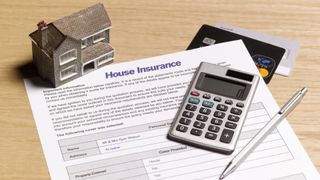
What isn’t covered by homeowners insurance?
Home insurance may be designed to provide cover in a wide range of scenarios where your home and its contents could be damaged, but it naturally can’t cover every eventuality. "Even the most comprehensive homeowners insurance coverage will not cover everything that could go wrong,” says Solomon. "For example, you cannot purposefully damage your home and then expect your insurer to pay for it.”
But what are the most common exclusions? Well, "almost all policies have exclusions for damage due to flooding, earthquakes, acts of war, vermin and other items,” says Kulda. Often referred to as ‘acts of God’, natural disasters are often high on the list of exclusions, along with the potential consequences of those disasters (such as sewage and drain backup after a flood). Damage caused by a power outage is also typically excluded, as is damage from infestation, along with damage as a result of failure to maintain your property correctly (roof leaks that are caused by a lack of maintenance, for example).
However, as Kulda points out, "some of these perils can be covered for an additional premium.” So, while it’s vital to be aware of things your insurer won’t pay out for so you don’t get any nasty surprises – which is why you should always read your policy documents thoroughly – it’s just as important to understand the range of optional extras available and how you can tailor your policy, ensuring you’ve got the level of cover that’s right for your particular circumstances.
What are endorsements?
Endorsements, otherwise known as riders, are "contractual modifications to the underlying contract (e.g. the homeowners insurance policy),” explains Evan Walker, Owner at The Law Office of Evan W. Walker. "They allow you to modify the homeowners policy and tailor it to your specific needs. Common endorsements include replacement cost coverage (i.e. your insurance company cannot deduct depreciation from your personal property) and earthquake coverage.”
Essentially, endorsements are additional features that may not be included in the original contract but can be added separately, usually at a premium. "For example, there is coverage available for flooding through a separate policy sold by the National Flood Insurance Program,” adds Kulda. "And, you can generally get an endorsement (or rider) for earthquake coverage from your insurer for an extra charge.”
How much coverage will I need?
This will depend on a whole range of different factors, from the value of your home and personal belongings to your budget, and the level of comprehensiveness you’re looking for in a policy. Typically speaking, HO-3 policies will be the preferred level of cover for the majority and in most cases will be sufficient, though some may prefer the additional protection afforded by HO-5 policies.
It’s important to consider your future budget, too. Opting for cover on an actual cost basis may be the cheapest option, but could you afford the additional cost of replacing your possessions or repairing your home if disaster struck? If not, it may be better to take a long-term view and opt for replacement or even extended cover.
As for specific values, it’s generally recommended to opt for dwelling coverage that’s equal to your home’s rebuild cost – don’t be tempted to simply cover your mortgage amount, as this won’t be sufficient to rebuild your home if you had to – while coverage for other structures will equate to around 10-20% of that, as will cover for alternative accommodation/living expenses. Personal property coverage will typically be 50-75% of your dwelling coverage limit, while personal liability cover will usually be between $100,000 and $500,000, and medical expenses cover will typically be $5,000 or below. However, as with all aspects of homeowners insurance, the detail of your policy (including the level of cover you’re getting) can always be tailored.

What are deductibles?
A deductible is the amount of money you’d have to put towards an insured loss before your insurer pays the claim. The deductible is essentially subtracted – or ‘deducted’ – from your payment. Deductibles can either be a set dollar amount or a percentage value, and the rules regarding them can vary between states.
It’s always wise to think carefully about the level of deductible you’re opting for. A higher deductible can often result in lower premiums, but it’s important to consider whether you could actually afford to pay that amount in the event of a claim. Bear in mind that deductibles can be different if you’ve got additional riders, such as earthquake or flood coverage, which can vary by state and insurance company.
What happens if I’m underinsured?
It can sometimes be tempting to underestimate the expense of your home and its belongings in order to benefit from a cheaper policy, but this puts you at risk of huge financial loss should you need to make a claim. Yet according to Walker, it’s a common problem, with most homeowners underinsured.
"Being underinsured means you won’t be fully compensated for a loss,” he explains. "Although your insurance company will pay you the insurance limits for your property, it will not be enough. For example, your insurance limits for your home are $250,000, and fire is covered under your insurance policy. A fire burns your house down. It will cost $350,000 to rebuild your house. Although your insurance company will pay you the limit of $250,000, you’ll still be $100,000 short.”
This highlights the importance of ensuring you’ve got adequate cover, as there’d be nothing worse than needing to make a claim only to find that you’re still left footing the bill.
How much does home owners insurance cost?
According to data from Quadrant Information Services, the average cost of homeowners insurance in the United States is $1,312 per year, or around $109 per month (based on $250,000 of dwelling cover). That said, this is just an average, and the amount you’re quoted will vary depending on your location – things like the cost of rebuilding and the likelihood of being hit with a natural disaster will have a key part to play – and the amount of cover you’re looking for.
Solomon points out that the cost of homeowners insurance can depend on several factors, including the age of your property, the cost of rebuilding it, the materials used in its construction, your location, your choice of coverage (including policy limits and deductibles), your individual claims history and that of your local area. Your credit score can have an impact in some states, too.
You should also consider whether or not your home has any special features (such as pools and hot tubs) and the condition of your home’s roof, as well as things like the crime risk of your neighborhood and any fire or weather-related risks, all of which are dependent on your location. Quite simply, the cost of homeowners insurance is variable and can also vary between providers, but there are things you can do to bring the price down.

How can I reduce my premiums?
"If your rate appears to be too expensive, there are simple ways to reduce your home’s insurance costs,” says Solomon. "Many insurers, for example, provide a discount for bundling your house and auto insurance. You may also qualify for a lower cost if you have typical safety features installed, such as burglar alarms and deadbolt locks.” You may want to take it one step further and opt for a complete home security system, which can give you peace of mind while potentially bringing your insurance quote down to size (though any insurance benefit will depend on the type of system and your policy provider, so always make sure to check).
How can I get the best deal on homeowners insurance?
Solomon offers these tips for getting the best price on home insurance:
- Get quotes from different companies.
- Increase your deductible.
- Take precautions to protect your home from fire and theft.
- Invest in a new roof and shutters (certain kinds of roofing materials can lead to lower premiums, and some providers offer discounts for storm shutters).
- Be mindful of ‘attractive nuisances’, such as pools, trampolines, bike ramps and treehouses, which can be viewed as unsafe and pose a heightened potential for lawsuits. Avoiding them can potentially reduce your home insurance costs.
- Investigate the cost of homeowners insurance before buying a new property.
- Getting your home and auto insurance from the same provider can reduce your premiums by as much as 15%, but "be sure that the combined price is less than purchasing the various coverages from different organizations.”
- Maintain a good credit rating.
"It’s also a good idea to browse around and compare home insurance quotes to ensure you’re getting the best rate possible,” adds Solomon, which is where online tools can come in.

Can I get a home insurance quote online?
Yes, in fact most providers will have online tools that allow you to easily access reliable quotes to make comparing the options a breeze, and comparison sites can make it even simpler. You’ll typically be able to source several quotes by inputting a few personal details and specifying the kind of cover you’re looking for, and will be presented with the best options tailored to your precise needs.
However, when searching for insurance quotes online, make sure to look beyond price alone – you’ll need to consider things like the financial health of the company, their claims response record, customer satisfaction, and whether there are any complaints lodged against them. Visiting the Department of Insurance website for your particular state would be a great first step, allowing you to check the ratings, credentials, creditworthiness and overall legitimacy of any potential insurance provider.
Can I arrange homeowners insurance myself?
You can certainly arrange a suitable policy yourself, but it can often be wise to seek the experts. "Because your home is usually your largest and most important asset it is essential it be well covered, which is why it’s a very good idea to work with an agent who can ask about your priorities and go through all of the options available to make certain you have the right coverages in place,” explains Kulda. "Again it is very important to read the policy and ask questions about things you may not understand or need more information on. Often, homeowners may overlook items they own or things they want protected, and an agent can help guide policyholders to the best decisions.”
If you’re going down the agent route, you’ll want to make sure that it’s an independent agent who deals with multiple different companies and can therefore source a range of quotes, rather than a ‘captive’ agent who works for just one insurer. Make sure to factor in any additional fees that they may charge as well, as this can make a difference to your overall policy costs.
However, if you’re going it alone, you’ll want to be even more confident that you’re sourcing the right deal, which means spending time to carefully compare the options. Our overview of the best homeowners insurance will be a great place to start, but to truly get an idea of which policy would be best-suited to your needs, it could be wise to head to a comparison site, such as homeinsurance.net, where you can easily compare a range of different quotes in one place.
What if I’m looking to renew?
If it’s time to renew your home insurance policy, the same rules apply – you need to make sure that you’re looking for the right level of coverage and compare prices accordingly, though it’s important to consider whether your needs have changed since you took out the original contract.
In particular, it’s essential to talk to your insurance agent or provider about the home’s value, says Kulda. "With prices soaring and with many homeowners doing projects to improve their homes recently, it might be time for a homeowner to ask for increased limits to protect the higher values and protect against being underinsured. Some insurers even offer the option of inflation protection for a small additional premium, which helps in cases where homes are rapidly increasing in value or if a storm causes widespread damage and the cost to rebuild spikes.”
You’ll want to review your policy regularly and make note of any changes that could potentially lower your premiums, too, such as if you’ve fixed the roof, taken down the trampoline, or even paid off your mortgage (insurers often take the view that if you own your home outright you’ll take better care of it, and can reduce your premiums accordingly). Take pictures and keep any relevant receipts as proof of any upgrades, and make sure to do a regular inventory of your possessions to ensure you’ve got the right level of cover there, too. And remember, loyalty can pay – while it’s often worthwhile comparing the market to see what else is out there, the simple act of staying with the same insurer could result in lower premiums over time.

Making a home insurance claim
If your home is hit by disaster, it’s time to approach your insurer and make a claim. You can generally do this by phone, though some providers allow you to claim online. Either way, most insurers stipulate that they must be made aware of any incident within a certain timeframe, and ideally you’ll want to do this as soon as possible. Depending on the situation, you may need to file a police report too, which you should do before anything else (make sure to take the details of anyone you spoke to or who inspected your property, should you need it for the insurance claim).
Different insurers will have slightly different procedures, but typically speaking, once you’ve filed the necessary reports and notified your insurance company, you’ll want to document the damage (such as by taking photos or video footage) and make an inventory of any possessions that have been damaged or stolen, together with their value. You can then make any emergency repairs that may be required, making sure to keep any receipts, and if your home is uninhabitable you’ll want to keep a record of any hotel bills, meals and related costs to be reimbursed. You’ll then be sent claims forms that you should fill in and return as soon as possible, and after that, it’s in the hands of the insurance company.
What happens when I file a claim?
"After filing a home insurance claim, a claims adjuster will come to your home to assess the damage,” explains Solomon. "They may want evidence to back up your claims, such as photos, videos, or house inventory checklists.” If approved, the adjuster may provide you a check for the whole settlement (less your deductible) either in advance or at a later date to reimburse your costs; you may even receive an initial first payment to help cover immediate expenses (such as for emergency repairs or lodging if you needed to move out of your home), and further payments as work is completed.
"Typically, you’ll receive different checks for each loss category, such as one for structural damage and another for personal property,” Solomon continues. "If your claim for personal property is approved, you will be paid the current cash worth of the assets, even if your policy covers actual replacement value. When this occurs, you will usually be paid for the difference in cost after purchasing new items and submitting your receipts to your provider. Discuss with your insurer if you must replace the products within a specified time range.”
If your property is mortgaged, the check for structural damage may be written out to both you and your lender, with mortgage companies typically requiring to be named on any homeowners insurance policy and be involved in any subsequent insurance payments. If your lender gets the check, contact them to find out how repair payments will be handled – they may require that all funds are held in escrow and paid to the contractor as the works progress, who will typically need to be approved by the lender.
"Contractors may want you to sign an agreement saying that the insurance company will pay them directly,” adds Solomon. "This could imply that you’re handing over your entire claim to the contractor. Do not sign anything until you are absolutely sure about what you are doing. If you have questions, contact your insurance company.”

Why might my claim be denied?
Hopefully, once you’ve filed your claim and the adjustor has been round to inspect the damage, your claim will be approved and you’ll be offered a settlement and sent the money. But unfortunately, that may not always be the case, and in some instances you might get some kick-back and find that your claim is denied. Luckily this isn’t that common – if you’ve got a genuine claim and follow the procedure as set out by your insurance provider, you shouldn’t have a problem. But just in case, here are a few of the most common reasons that claims are denied:
- Claiming for a peril that isn’t covered by the policy.
- Insufficient documentation/evidence to prove damage.
- Filing too late.
- Falling behind on premiums.
- Not taking appropriate preventative measures following a loss.
- Wear and tear/lack of proper maintenance.
- Making a false claim.
- Non-disclosure of facts when arranging a policy.
And, if your claim isn’t denied but you’re not happy with the amount your insurance provider is offering, don’t be afraid to push back. You don’t have to accept what they offer and are perfectly within your rights to dispute a claim and ask for more. You may even want to hire a public insurance adjuster if your insurance company won’t budge, thereby getting a second opinion and hopefully a strong case for dispute.
What happens after I’ve settled my claim?
Once the dust has settled – perhaps literally – your thoughts may turn to what happens next, particularly in terms of your premiums. It’s often the case that a claim will result in higher premiums going forwards as your no-claims history will be lost, but it’s still important to make sure that you’ve got suitable protection, particularly as you now know how valuable it can be.
"After your claim is processed, go over any gaps in your insurance coverage and make modifications to ensure you’re adequately protected in the future,” advises Solomon. "Filing a claim may affect your premiums based on your insurance company and claims history. When determining rates, insurers often consider losses linked with a home in the previous five years. If you file multiple claims during that time, insurers may consider your house to be ‘high risk.’
"If your insurance company raises your rates, ask about options to save money, such as bundling home and auto insurance or boosting your deductible. If you’re still dissatisfied, shop around for a better deal.”
In summary
Homeowners insurance may not be mandatory, but it’s nonetheless essential if you want to be confident that your property, and the contents held within it, is as protected as possible. Think of it as financial bubble wrap for your home. Of course, it’s something you hope you’ll never need to call upon – much as with all other kinds of insurance – but having this kind of safety net can be invaluable.
And, if you spend the time considering your options, choosing the best kind of policy for your needs and scouring the market to uncover the best deals, it needn’t cost a fortune either, so there’s nothing to lose and potentially everything to gain. Start the process by reading our reviews of the best homeowners insurance and you’ll be one step closer to having the peace of mind you need.
